

 |
||
 |
||
Vol. 10 (2): November 2007 |
||
Response of monk seals to
|
||||||||||||||||||||||||||||||||||||
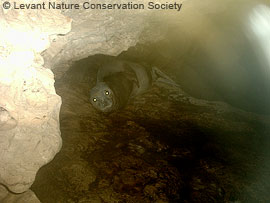 |
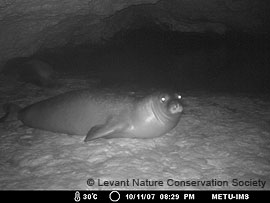 |
|
|
Fig. 1. Seal appearing to react to the camera flash. |
Fig. 2. A seal appearing to react to the infrared light source. |
The Levant Nature Conservation Society therefore began testing the effects of flash use on the seals. Two cameras, one with flash and the other with infrared light source are now being deployed in the cave consecutively each for an average deployment time of one week. The system is then replaced with the other in order to discount possible behavioural change by the seal due to time/season. Until now, 192 events have been recorded by the cameras. The first and preliminary results show that the average haul-out duration of a seal exposed to a flash is longer than those recorded by infrared light source. Evaluation of the results of the two systems did not show a statistically significant difference (F test: p>0.05).
The number of times that a seal was exposed to the flash during a haul-out varied between 1 and 27. This number is slightly lower than compared to infrared shots. The average shots of the two systems are almost identical (F test: p>0.05).
|
System/statistics |
With flash |
Infrared |
|
Total events recorded |
118 |
74 |
|
Average haul-out (S.D.) |
429 min (551) |
247 min (231) |
|
Max. shot |
27 |
23 |
|
Mean shot (S.D.) |
6.6 (7.9) |
5.5 (7.1) |
|
Sample size |
18 |
14 |
Table: Statistical results.
All additional features of the camera, such as red-eye pre-flashing, audible click etc. are disabled in order to minimise as far as possible any unnecessary disturbance.
Some images obtained in infrared mode suggest that seals may react briefly to the triggering of the infrared bulbs that momentarily turn red when activated (Fig. 2). However, the light is sufficiently brief and unobtrusive that the animals quickly resume their resting and haul-out behaviour.
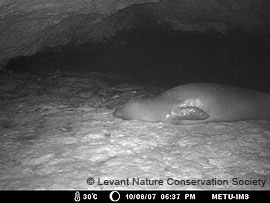 |
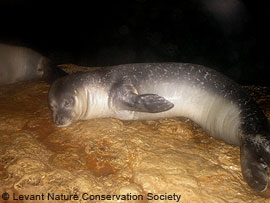 |
|
|
Fig. 3. Seal captured in infrared mode, where little image detail is available. |
Fig. 4. A hauled-out seal captured by the camera operating in flash mode. Colouration and marking is clearly visible compared to images obtained in infrared mode. |
Collecting data of this kind is inherently difficult because of the rarity of the species. However, the data at hand, although scarce, provides evidence that the use of built-in flashes with 10-minute intervals does not inflict disturbance upon the seals in the cave. The use of colour images in seal photo-identification has great advantages over infrared images, in which the details, such as scars and discolorations, are inevitably faded out (Fig. 3 & 4).
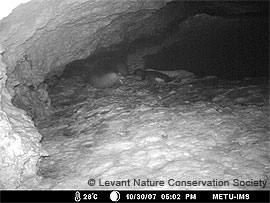 |
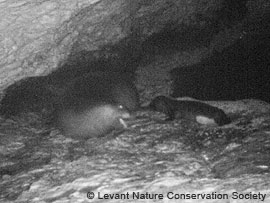 |
|
|
Fig. 5 and 6. On 30 October, shortly before this article went to press, the infrared monitoring system recorded a mother with newborn pup in the cave. |
||
The author expresses his thanks to Giulia Mo of ICRAM for commenting upon and reviewing this article.
Copyright © 2007 Ali Cemal Gücü, The Monachus Guardian. All Rights Reserved |